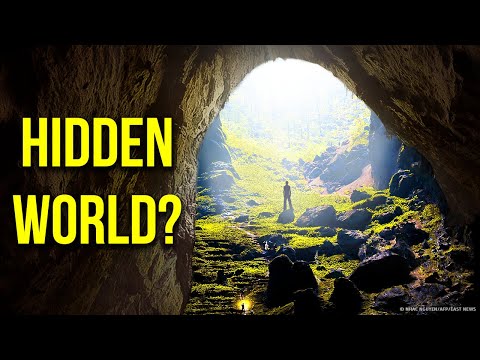
Deep in the heart of Phong Nha-Ke Bang National Park in Quang Binh Province, Vietnam lies Son Doong Cave, a colossal natural wonder that has captured the imagination of explorers and scientists worldwide. Recently, new explorations have revealed that this mammoth cave is even larger than previously thought, concealing within its vast chambers hidden ecosystems complete with jungles, lakes, and intricate labyrinths.
#### A Discovery That Changed Our Understanding of Natural Wonders
Son Doong Cave was first discovered by a local farmer named Ho Khanh in 1991, but it wasn’t until 2009 when a group led by British cavers from the British Cave Research Association conducted a survey that the true scale of Son Doong was acknowledged globally. Initial measurements pegged the cave as the largest in the world with its main cavern capable of fitting an entire New York City block.
#### New Explorations Reveal More Secrets
Recent expeditions have ventured deeper into Son Doong’s recesses. Utilizing more advanced technology and mapping techniques, explorers found that Son Doong extends further than previous estimates. The discovery came after divers navigated submerged tunnels at the end of what was thought to be the cave’s known limit. These underwater passages led to new dry chambers and confirmed that Son Doong is connected with another enormous cave system known as Hang Thung.
This connection means Son Doong’s volume is even greater than what current records hold. The complexity and extent of these interlinked passages suggest an underground world teeming with unexplored territories.
#### An Ecosystem Within Earth
The uniqueness of Son Doong lies not only in its size but also in its contained environments. Within its towering walls lies a mini-jungle, known to locals as “Garden of Edam.” This oasis is illuminated by sunlight streaming through giant roof collapses (dolines) and sustains a lush habitat for wildlife including monkeys, bats, birds, and various insects.
Perhaps most fascinating are the isolated ecosystems believed to have evolved uniquely within this subterranean world. Scientists have documented distinct species here that are not found anywhere else on Earth – a testament to its undisturbed solitude over millions of years.
#### Mysteries Lurk in Its Depths
The cave also hosts pristine lakes with crystal-clear water, some stretching over several kilometers long at depths yet to be fully measured. These underwater systems hold secrets about hydrological processes at work far beneath the Earth’s surface and possibly about life forms adapted to extreme conditions.
Moreover, paleontologists have uncovered fossils within Son Doong that provide insights into ancient rainforests which once covered Vietnam more than 300 million years ago during different climatic conditions before being encapsulated by limestone layers formed under ancient seas.
#### Challenges in Preservation
Preserving this natural marvel presents significant challenges. The surge in interest has led to increased tourism pressures which might threaten the delicate ecosystem within Son Doong. Vietnamese authorities along with conservationists are working on strategies to balance tourism with conservation efforts ensuring future generations can also witness this natural wonder.
#### Conclusion
Son Doong Cave is much more than just a record-breaking natural feature; it represents one of mother nature’s most sublime creations offering insights into geological processes, biodiversity evolution, and paleoclimatic history. As we continue to explore these hidden depths safely and sustainably we’re reminded of our planet’s inherent mystery and wonder – vast enough to still hide jungles deep beneath its surface.
